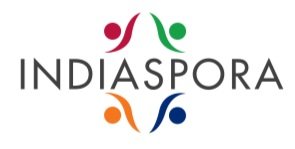“The Invisible Indian": A Study of Poverty in the Indian American Population
RELEASE DATE OCTOBER 1, 2020 at 8 pm U.S. Eastern Time
Press Release
An estimated 6.5 percent of Indian diaspora live in poverty, according to “The Invisible Indian,” a new report from Indiaspora and researchers at Johns Hopkins’ Paul Nitze School of Advanced International StudiesThe majority of the United States’ 4.2 million Indian Americans are thriving, but the COVID pandemic may drive the percentage of the Indian diaspora living in poverty to as high as 10.1 percent.San Francisco, CA | Washington, DC — October 1, 2020 — Indiaspora, a nonprofit organization of global Indian diaspora leaders from various backgrounds and professions, released today at their Indiaspora Philanthropy Summit 2020, “A Study of Poverty in the Indian American Population,” with researchers Devesh Kapur and Jashan Bajwaat of Johns Hopkins’ Paul Nitze School of Advanced International Studies that focuses on the underprivileged Indian diaspora in the U.S.While the Indian diaspora are one of the most affluent ethnic minorities in the U.S., with a median income of $120,000, nearly double that of the average U.S. household, a look into the U.S. Census data found about 250,000 of the 4.2 million Indian Americans in the U.S. live below the poverty line.“With this report, we wanted to draw attention to the plight of the most underprivileged Indian Americans,” said MR Rangaswami, founder of Indiaspora. "With COVID-19 wreaking health and economic havoc, this is an appropriate moment to raise awareness and discuss the issue of poverty that exists in our otherwise affluent community. We hope that the report will lead to an increased focus on this topic, followed by targeted measures to make a positive difference."While the study provides a detailed analysis of the impoverished populations of the Indian American community, Indian Americans are still less likely to be living in poverty compared to white, Black and Hispanic Americans. While poverty in the U.S. overall declined from 15.1 percent in 2010 to 11.8 percent in 2018, Indian American households experienced a decline from 9 percent to 6.5 percent in 2018. "This report unveils the specific characteristics of impoverished Indian Americans. In 2018, 6.5% of Indian American households were living below the poverty line. Their place of residence overlapped with areas where higher numbers of unauthorized Indian American immigrants reside,” said Devesh Kapur, Director of Asia Programs and Starr Foundation Professor of South Asian Studies at Johns Hopkins University School of Advanced International Studies. “The COVID-19 pandemic is likely to increase poverty among Indian Americans by between a quarter and half, depending on the duration and intensity of the health and economic shocks.”The report also details a large percentage of impoverished Indian Americans are not in the labor force, with four-fifths of this group being undocumented. In addition, the study found underprivileged Indian Americans live in the same states as other more affluent Indian diaspora in the U.S. who live above the poverty line. By identifying the demographics, vulnerabilities, cultural links, and geographies of the Indian diaspora living in poverty, specific strategies can be developed to mitigate the risks faced by these “Invisible Indians”.Indiaspora (www.indiaspora.org) is a nonprofit organization established to transform the success of the Indian diaspora into meaningful impact worldwide. Their members form a powerful network of global leaders who are committed to building stronger communities with a culture of giving and inspiring social change.
# # #
CONTACT: Mansi Patel
Senior Communications and Outreach Manager. Indiaspora
mansi@indiaspora.org
cell: 772-486-0351
